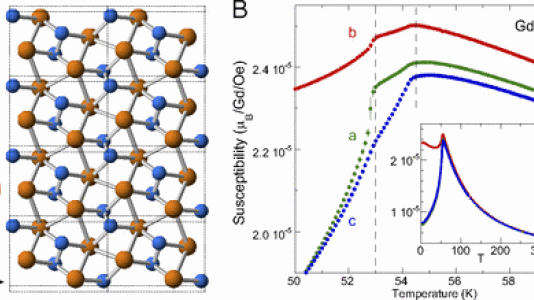
Incommensurate density waves exist in a wide variety of correlated electron systems, including cuprate high-temperature superconductors, transition-metal itinerant magnets, rare-earth compounds, and organic low-dimensional structures. They are often electronically soft and continuously tunable. Furthermore, the incommensurate structures are often only weakly coupled to other degrees of freedom in the underlying lattice, giving rise to the rare possibility of direct theoretical modeling of a variety of experimentally accessible material systems, spanning functional materials of technological importance to fundamental topics of emergent states in quantum critical phenomena.
For both itinerant electrons and spins, it is possible to form an incommensurate density wave through the Fermi surface nesting effect, although the two cases are often not equivalent. For charge density waves (CDW), the local ionic cores in the lattice mandate an electron-phonon coupling between itinerant and localized electrons. On the other hand, the spin density wave (SDW) in archetypical systems such as chromium and many low-dimensional organics seldom involves localized spins.
Researchers from The University of Chicago, Los Alamos National Laboratory, Oak Ridge National Laboratory, the University of Tennessee, and Argonne National Laboratory studied a unique example of the nesting-driven spin density wave ground state in the rare-earth magnet GdSi that allowed them to explore the local and itinerant spin interaction. X-ray magnetic diffraction was carried out at X-ray Science Division (XSD) beamline 4-ID-D at the Advanced Photon Source (APS), and high-resolution x-ray powder diffraction was carried out at XSD beamline 11-BM, also at the APS, along with magneto-transport measurements carried out at the Materials Research Science and Engineering Center of the James Franck Institute at The University of Chicago.
The study showed that this antiferromagnetic system is the result of cooperative interaction between the Fermi surface nested itinerant spins and an indirect exchange interaction (RKKY) mediated by localized moments. The nested itinerant electrons draw their coupling strength by scattering off the ordered local moments. In a self-consistent manner, those itinerant electrons also mediate the RKKY interaction between local moments with an ordering wave vector set by the nesting condition.
This study completes the missing link in the analogy between CDW and SDW systems, and shows that the itinerant and local entities in a solid could organize in a cooperative fashion.
Yejun Feng, Jiyang Wang, D.M. Silevitch, B. Mihaila, J.W. Kim, J.-Q. Yan, R.K. Schulze, Nayoon Woo, A. Palmer, Y. Ren, Jasper van Wezel, P.B. Littlewood, T.F. Rosenbaum, “Incommensurate antiferromagnetism in a pure spin system via cooperative organization of local and itinerant moments,” Proc. Natl. Acad. Sci. USA 110, 3287 (2013).